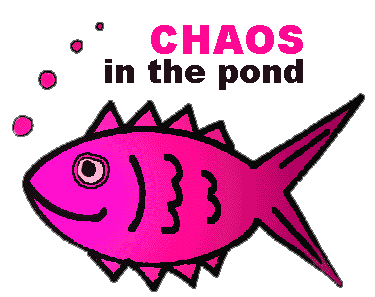Source: James Gleick's Chaos, Making a New Science


One model is to assume that your fish stock increases each year by some growth rate:
y(next year) = rate * y(this year)...where "y" is the number of fish and "rate" is the growth rate (say, 2.4).
Of course the problem is that the pond is only so big, and there only so much food around. There has to be something in the model to limit the population growth. Otherwise you'll be up to your neck in goldfish in no time.
Enough of the lecture, jump me straight to...